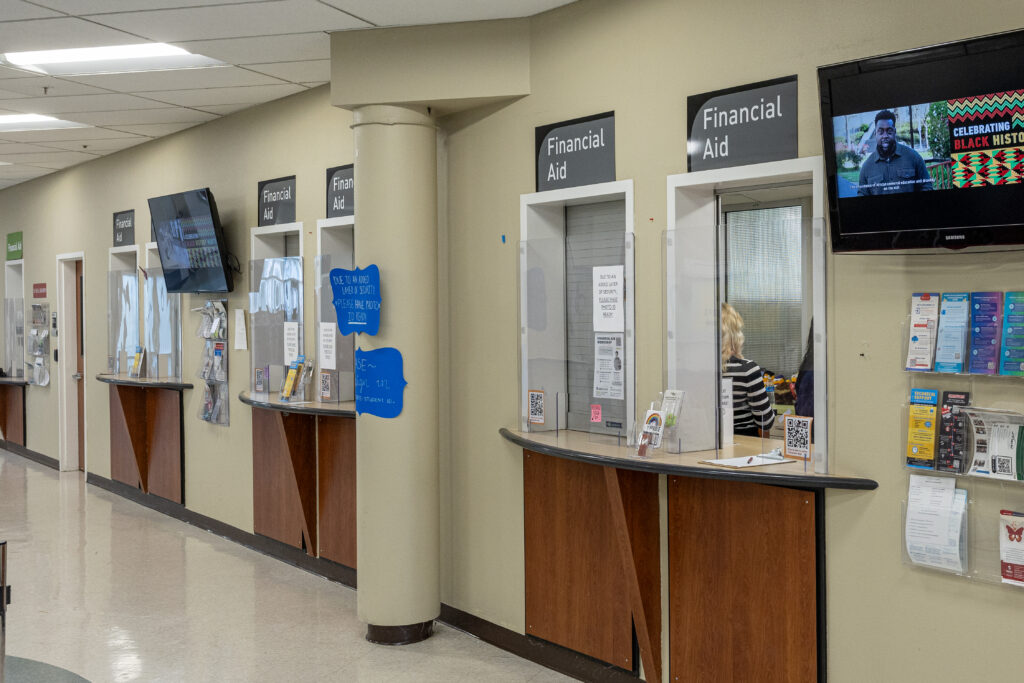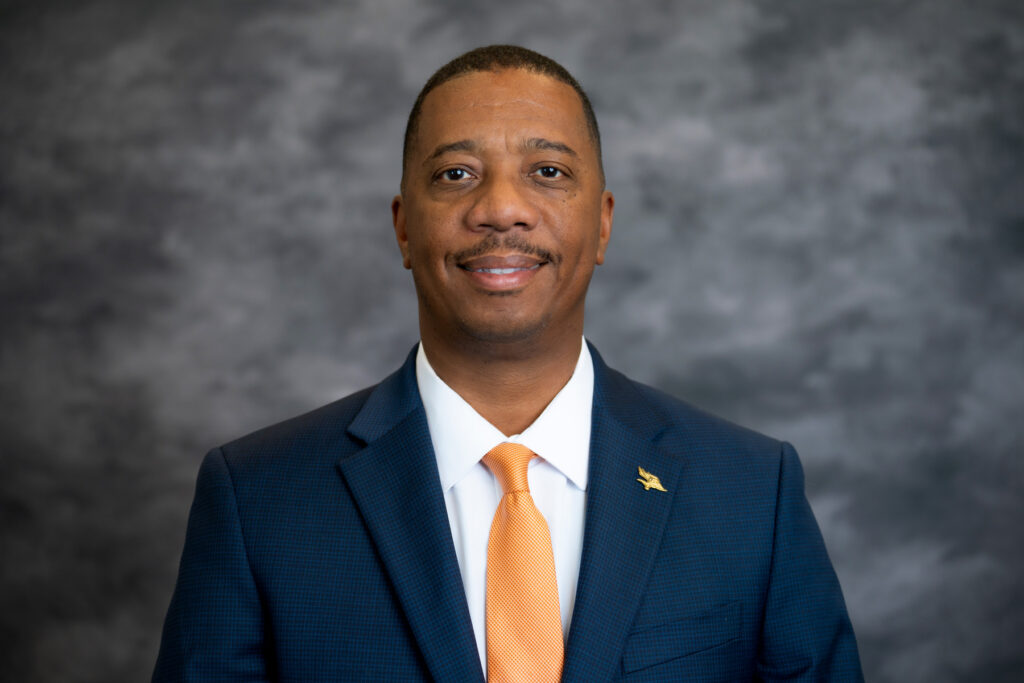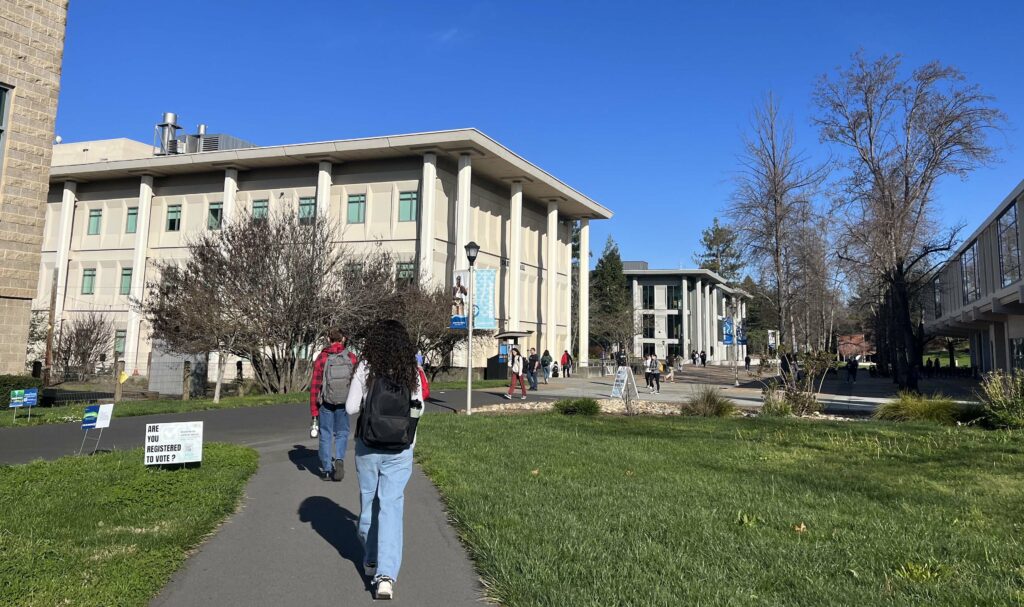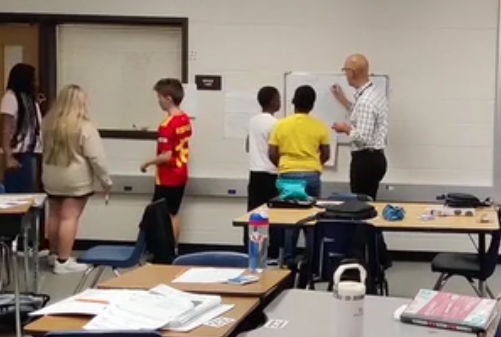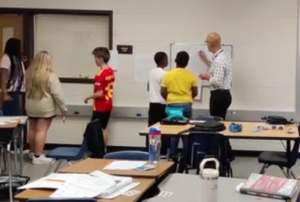Heather Cox Richardson writes today that Trump eagerly overstepped his authority so as to create a crisis in Los Angeles. Local and state authorities responded appropriately to protests against the aggressive actions of ICE. But Trump insisted that there was an insurrection underway, a statement teeeted by his aide Stephen Miller. He took charge of the state National Guard, which was last done in 1958 when President Eisenhower called in the Arkansas National Guard to restore order in Little Rock during white protests against civil rights enforcement.
HRC suggests two reasons for Trump’s eagerness to call in troops in L.A. First, he wants a pretext to send troops anywhere anytime, in effect, to create a police state. Second, he wants to distract attention from his embarrassing breakup with Elon Musk, the chaos caused by his tariffs, and the controversies surrounding his “One Ugly Bill” and its threat to Medicaid.
A third reason is that he seized on the opportunity to humiliate Democratic Governor Newsom.
A fourth reason is that he loves to play the part of a tough guy.
She wrote:
Flatbed train cars carrying thousands of tanks rolled into Washington, D.C., yesterday in preparation for the military parade planned for June 14. On the other side of the country, protesters near Los Angeles filmed officers from Immigration and Customs Enforcement (ICE) throwing flash-bang grenades into a crowd of protesters. The two images make a disturbing portrait of the United States of America under the Donald J. Trump regime as Trump tries to use the issue of immigration to establish a police state.
In January 2024, Trump pressured Republican lawmakers to kill a bipartisan immigration measure that would have beefed up border security and funding immigration courts because he wanted to campaign on the issue of immigration. During that campaign, Trump made much of the high immigration numbers in the United States after the worst of the coronavirus pandemic, when the booming U.S. economy attracted migrants. He went so far as to claim that migrants were eating people’s pets.
Many Trump supporters apparently believed officials in a Trump administration would only deport violent criminals, although Trump’s team had made it clear in his first term that they considered anyone who had broken immigration laws a criminal. Crackdowns began as soon as Trump took office, sweeping in individuals who had no criminal records in the U.S. and who were in the U.S. legally. The administration worked to define those individuals as criminals and insisted they had no right to the due process guaranteed by the U.S. Constitution.
Anna Giaritelli of the Washington Examiner reported that at a meeting in late May, White House deputy chief of staff Stephen Miller, who appears to be leading the administration’s immigration efforts, “eviscerated” federal immigration officials for numbers of deportations and renditions that, at around 600 people per day, he considered far too low. “Stephen Miller wants everybody arrested,” one of the officials at the meeting told Giaritelli. “‘‘Why aren’t you at Home Depot? Why aren’t you at 7-Eleven?’” Miller said.
After the meeting, Miller told Fox News Channel host Sean Hannity that the administration wanted “a minimum of 3,000 arrests for ICE every day, and President Trump is going to keep pushing to get that number up higher each and every single day.” Thomas Homan, Trump’s border czar, took the message to heart. “You’re going to see more work site enforcement than you’ve ever seen in the history of this nation,” he told reporters. “We’re going to flood the zone.”
According to a recent report by Goldman Sachs, undocumented immigrants made up more than 4% of the nation’s workforce in 2023 and are concentrated in landscaping, farm work, and construction work. Sweeps of workplaces where immigrants are concentrated are an easy way to meet quotas.
The Trump regime apparently decided to demonstrate its power in Los Angeles, where over the course of the past week, hundreds of undocumented immigrants who went to scheduled check-in appointments with ICE were taken into custody—sometimes with their families—and held in the basement of the Edward R. Roybal Federal Building in downtown L.A.
This was the backdrop when on Friday, June 7, federal officials launched a new phase of the regime’s crackdown on immigration, focusing on L.A. workplaces. Agents in tactical gear sweeping through the city’s garment district met protesters who chanted and threw eggs; agents pepper sprayed the protesters and shot at them with what are known as “less-lethal projectiles” or “non-lethal bullets” because they are made of rubber or plastic. Protesters also gathered around the federal detention center, demanding the release of their relatives; officers in riot gear dispersed the crowd with tear gas.
Officers arrested more than 40 people, including David Huerta, the president of the Service Employees International Union California (SEIU), for impeding a federal officer while protesting. Huerta’s arrest turned union members out to stand against ICE.
At 10:33 a.m. yesterday morning eastern time—so, before anything was going on in Los Angeles—Miller reposted a clip of protesters surrounding the federal detention center in Los Angeles and wrote that these protesters constituted “[a]n insurrection against the laws and sovereignty of the United States.” Miller has appeared eager to invoke the Insurrection Act to use the military against Americans.
On Saturday, in the predominantly Latino city of Paramount about 20 miles south of L.A., Rachel Uranga and Ruben Vives of the Los Angeles Times reported that people spotted a caravan of border patrol agents across the street from the Home Depot. Word spread on social media, and protesters arrived to show that ICE’s arrest of families was not welcome. As about a hundred protesters arrived, the Home Depot closed.
Over the course of the afternoon, protesters shouted at the federal agents, who formed a line and shot tear gas or rounds of flash-bang grenades if anyone threw anything at them or approached them. L.A. County sheriff’s deputies arrived to block off a perimeter, and the border agents departed shortly after, leaving the protesters and the sheriff’s deputies, who shot flash-bang grenades at the crowd. The struggle between the deputies and about 100 protesters continued until midnight.
Almost four million people live in Los Angeles, with more than 12 million in the greater L.A. area, making the protests relatively small. Nonetheless, on Saturday evening, Trump signed an order saying that “[t]o the extent that protests or acts of violence directly inhibit the execution of the laws, they constitute a form of rebellion against the authority of the Government of the United States.” Based on that weak finding, he called out at least 2,000 members of the California National Guard to protect ICE and other government personnel, activating a state’s National Guard without a request from its governor for the first time in 50 years.
At 8:25 p.m., his social media account posted: “If Governor Gavin Newscum, of California, and Mayor Karen Bass, of Los Angeles, can’t do their jobs, which everyone knows they can’t, then the Federal Government will step in and solve the problem, RIOTS & LOOTERS, the way it should be solved!!!”
California’s governor Gavin Newsom said Trump’s plan was “purposefully inflammatory.” “LA authorities are able to access law enforcement assistance at a moment’s notice,” Newsom said. “We are in close coordination with the city and county, and there is currently no unmet need. The Guard has been admirably serving LA throughout recovery. This is the wrong mission and will erode public trust.” Newsom said the administration is trying “not to meet an unmet need, but to manufacture a crisis.”
Trump apparently was not too terribly concerned about the “rebellion”; he was at the UFC fight in Newark, New Jersey, by 10:00 p.m.
At 10:06 p.m., Defense Secretary Pete Hegseth, who is under investigation over his involvement with a Signal chat that inappropriately included classified information, posted: “The violent mob assaults on ICE and Federal Law Enforcement are designed to prevent the removal of Criminal Illegal Aliens from our soil; a dangerous invasion facilitated by criminal cartels (aka Foreign Terrorist Organizations) and a huge NATIONAL SECURITY RISK.” He added that the Defense Department was mobilizing the National Guard and that “if violence continues, active duty Marines at Camp Pendleton will also be mobilized—they are on high alert.”
At 2:41 a.m., Trump’s social media account posted: “Great job by the National Guard in Los Angeles after two days of violence, clashes and unrest. We have an incompetent Governor (Newscum) and Mayor (Bass) who were, as usual…unable to to handle the task. These Radical Left protests, by instigators and often paid troublemakers, will NOT BE TOLERATED…. Again, thank you to the National Guard for a job well done!”
Just an hour later, at 3:22 a.m., Los Angeles mayor Karen Bass posted: “I want to thank LAPD and local law enforcement for their work tonight. I also want to thank [Governor Gavin Newsom] for his support. Just to be clear, the National Guard has not been deployed in the City of Los Angeles.”
National Guard troops arrived in L.A. today, but James Queally, Nathan Solis, Salvador Hernandez, and Hannah Fry of the Los Angeles Times reported that the city’s garment district and Paramount were calm and that incidents of rock throwing were isolated. Law enforcement officers met those incidents with tear gas and less-lethal rounds.
Today, when reporters asked if he planned to send troops to L.A., Trump answered: “We’re gonna have troops everywhere. We’re not going to let this happen to our country. We’re not going to let our country be torn apart like it was under Biden.” Trump appeared to be referring to the divisions during the Biden administration caused by Trump and his loyalists, who falsely claimed that Biden had stolen the 2020 presidential election. (In the defamation trial happening right now in Colorado over those allegations, MyPillow chief executive officer Mike Lindell, who was a fierce advocate of Trump’s lie, will not present evidence that the election was rigged, his lawyers say. They added: “it’s just words. All Mike Lindell did was talk. Mike believed that he was telling the truth.”)
At 5:06 p.m. this evening, Trump’s social media account posted: “A once great American City, Los Angeles, has been invaded and occupied by Illegal Aliens and Criminals. Now violent, insurrectionist mobs are swarming and attacking our Federal Agents to try and stop our deportation operations—But these lawless riots only strengthen our resolve. I am directing Secretary of Homeland Security Kristi Noem, Secretary of Defense Pete Hegseth, and Attorney General Pam Bondi, in coordination with all other relevant Departments and Agencies, to take all such action necessary to liberate Los Angeles from the Migrant Invasion, and put an end to these Migrant riots. Order will be restored, the Illegals will be expelled, and Los Angeles will be set free.” He followed this statement with that odd closing he has been using lately: “Thank you for your attention to this matter!”
Marketplace host Kai Ryssdal answered: “Hello. I live in Los Angeles. The president is lying.”
At 6:27, Governor Newsom posted that he has “formally requested the Trump Administration rescind their unlawful deployment of troops in Los Angeles county and return them to my command. We didn’t have a problem until Trump got involved. This is a serious breach of state sovereignty—inflaming tensions while pulling resources from where they’re actually needed. Rescind the order. Return control to California.” The Democratic governors issued a statement standing with Newsom and calling Trump’s order “ineffective and dangerous.”
At 10:03, Trump posted: Governor Gavin Newscum and “Mayor” Bass should apologize to the people of Los Angeles for the absolutely horrible job that they have done, and this now includes the ongoing L.A. riots. These are not protesters, they are troublemakers and insurrectionists. Remember, NO MASKS!” Four minutes later, he posted: “Paid Insurrectionists!”
There is real weakness behind the regime’s power grab. Trump’s very public blowup with billionaire Elon Musk last week has opened up criticism of the Department of Government Efficiency that Musk controlled. In his fury, Musk suggested to Trump’s loyal followers that the reason the Epstein files detailing sexual assault of children haven’t been released is that Trump is implicated in them. Trump’s promised trade deals have not materialized, and indicators show his policies are hurting the economy.
And the Republicans’ “One Big, Beautiful Bill” is raising significant opposition. Today Senator Rand Paul (R-KY) complained about the excessive spending in the bill for ICE, prompting Stephen Miller to complain on social media and to claim that “each deportation saves taxpayers hundreds of thousands of dollars.” But David J. Bier of the libertarian Cato Institute on Friday estimated that the deportation plans in the measure would add almost $1 trillion in costs.
There is no doubt that as their other initiatives have stalled and popular opinion is turning against the administration on every issue, the Trump regime is trying to establish a police state. But in making Los Angeles their flashpoint, they chose a poor place to demonstrate dominance. Unlike a smaller, Republican-dominated city whose people might side with the administration, Los Angeles is a huge, multicultural city that the federal government does not have the personnel to subdue.
Trump stumbled as he climbed the stairs to Air Force One tonight.

